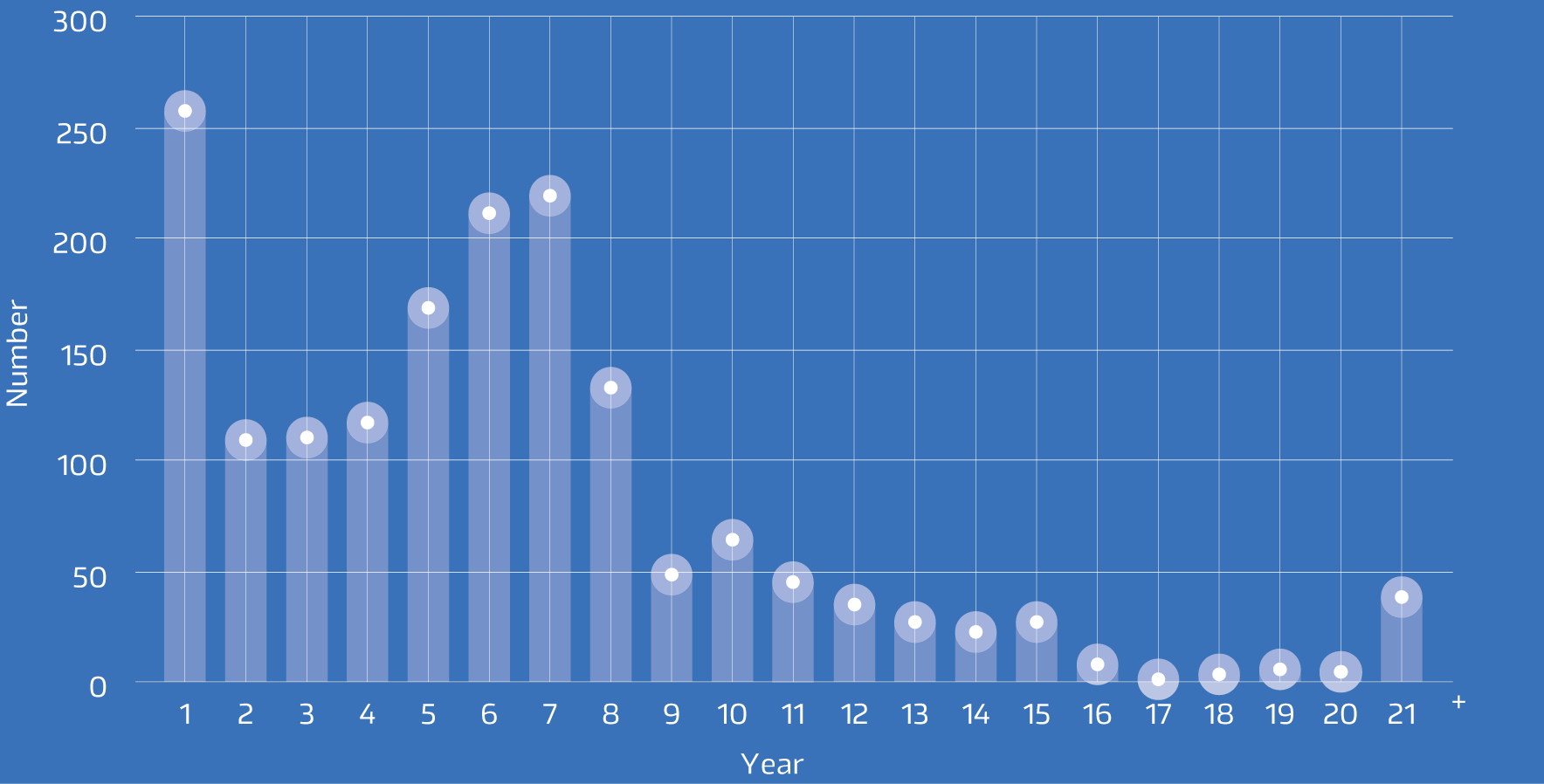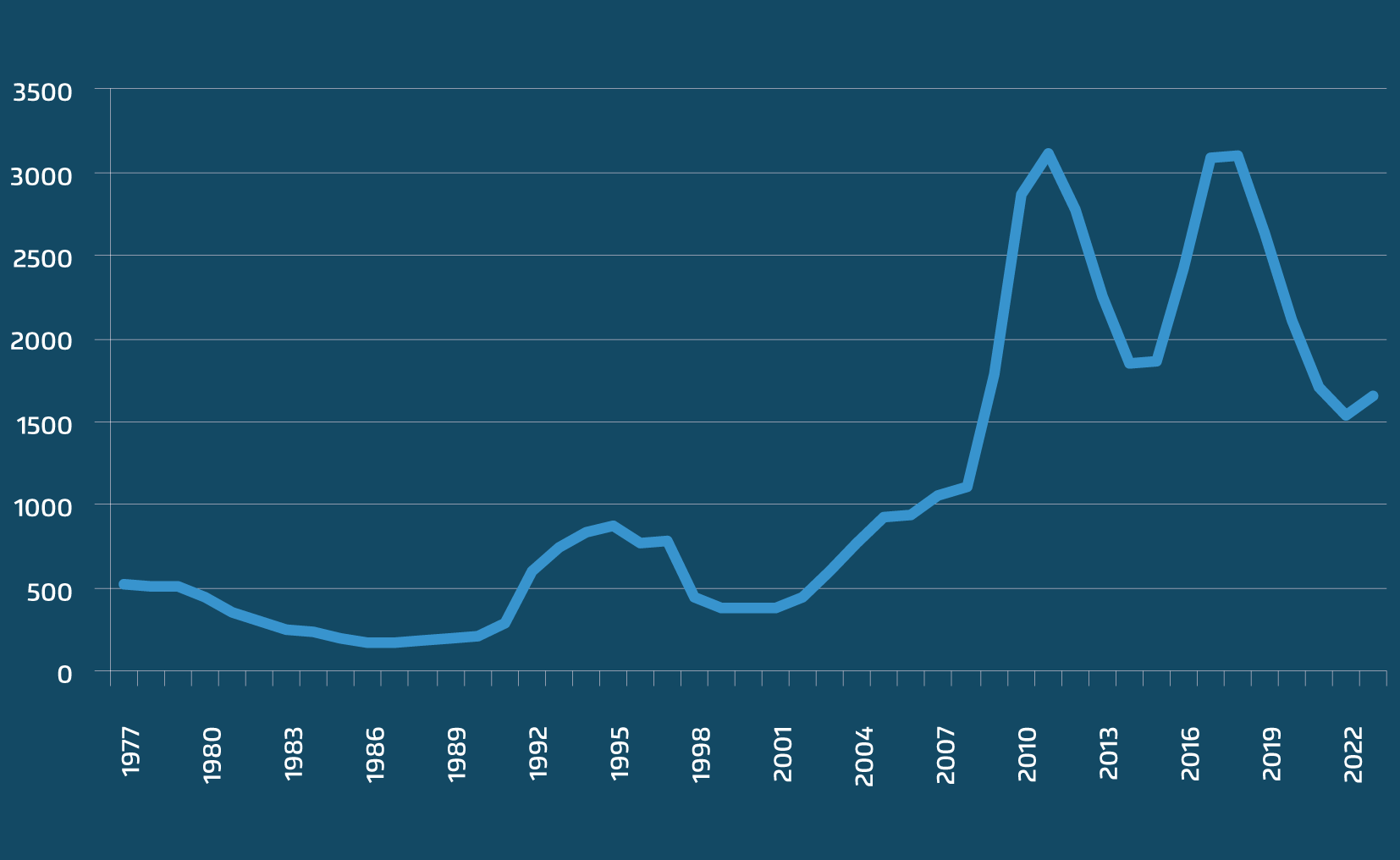Norway
Identifying stateless persons
in the Population Register
Background
Most stateless individuals in Norway came as resettlement refugees or asylum seekers, many of them with Palestinian background. A few stateless people are born in the country each year. The main problem facing stateless individuals living in Norway is the lack of a passport, limiting their ability to travel internationally. Despite being a small group, statistics on stateless persons and those who might be stateless, are still important for Norway given the recognition that all persons have the right to a nationality and a legal identity before the law, as well as the country’s citizenship laws.
In Norway, residence matters more than citizenship. Stateless persons with permanent residence in Norway have access to almost all the same rights as Norwegian citizens, and the same as other non-Norwegian citizens. The main difference is that stateless persons can apply for Norwegian citizenship sooner than most other non-citizens.
Identification of stateless persons in the Population Register
The digital version of the National Population Register (NPR) was established as an administrative register by Statistics Norway in 1964 based on the 1960 Population Census. At the same time an ID number was assigned to all residents of Norway. In 1991 the population register was transferred to the Norwegian Tax Administration. The two institutions cooperate very well on the use of the register.
The NPR includes information on citizenship, name, year of birth, sex, address, and country of birth. Where relevant, it also contains data on country of emigration and date of immigration to Norway. Data on the families and households, such as children, spouse and parents, and persons living in the same dwelling as stateless persons, may also be captured in the NPR using PINs of parents and spouses. Dwelling numbers are used by Statistics Norway to establish households.
Resident stateless persons on 1 January 2023 by number of years since first immigrating to Norway

Source: Statistics Norway
Citizenship is determined when an immigrant applies for residence in Norway, based on available documents and registered by the Directorate of Immigration (UDI), which transfers this information to the NPR. UDI also registers the reason for immigrating to Norway, which is transmitted to Statistics Norway.
Statistics Norway publishes its population statistics regularly online and in its Statistics Bank. [1] Statistics on statelessness are an integral part of population statistics – as part of citizenship statistics.
Statistics on the citizenship of the flows of immigrants and emigrants are published quarterly since 2007 and on the stock of stateless persons annually for all 356 municipalities since 2016. Statelessness is also one of the categories in the statistics on educational attainment (since 2014 [2], employment, participation in elections, etc. Historical Statistics include nationality statistics from population censuses 1910-1960. [3]
The NPR records 264 different citizenships for residents of Norway, including ‘Stateless’ (1,654 on 1.1.2023) and ‘Unknown’ (43 on 1.1.2023). These numbers vary significantly from year to year. [4]
“Norway’s system of good administrative registers makes it possible to produce all or most of the statistics on statelessness stocks and flows recommended by IROSS.”
– Helge Brunborg, Statistics Norway.
Number of stateless individuals residing in Norway on January 1, 1977-2023

Source: Statistics Norway
The use of the International Recommendations
Statistics Norway can produce statistics on most or all categories recommended by IROSS, both for stocks and flows of stateless persons, and disaggregated by country of birth. Norway’s experience has informed the development of IROSS, particularly for countries with existing or planned population registers.
The content of the international recommendations presents an opportunity to validate and inform future statistical development. The primary limitation of the Norwegian data in relation to IROSS is that there are missing data on siblings, parents and grandparents for many individuals born abroad. It is also challenging to compile statistics on statelessness-related individuals, since it requires current and retrospective data for the entire population on the household composition. [5]
Conclusion
Norway is one of few countries where the statistical office regularly receives good data on citizenship, including on statelessness, from the administrative National Population Register, which covers all residents of Norway, regardless of their citizenship. Most of the IROSS recommendations can be followed by using administrative data for Norway.
[1] See: Statistisk sentralbyrå.
[3] See: Historisk Statistikk.
[4] See: Brunborg, Helge (2016): Statsløse: mange i verden, få i Norge (in Norwegian). Samfunnsspeilet 4/2016, Statistisk sentralbyrå.
[5] See: Vassenden, Kåre (2020). Fra utenlandsk til norsk statsborgerskap gjennom mer enn førti år (in Norwegian). Reports 2020/31, Statistisk sentralbyrå.
